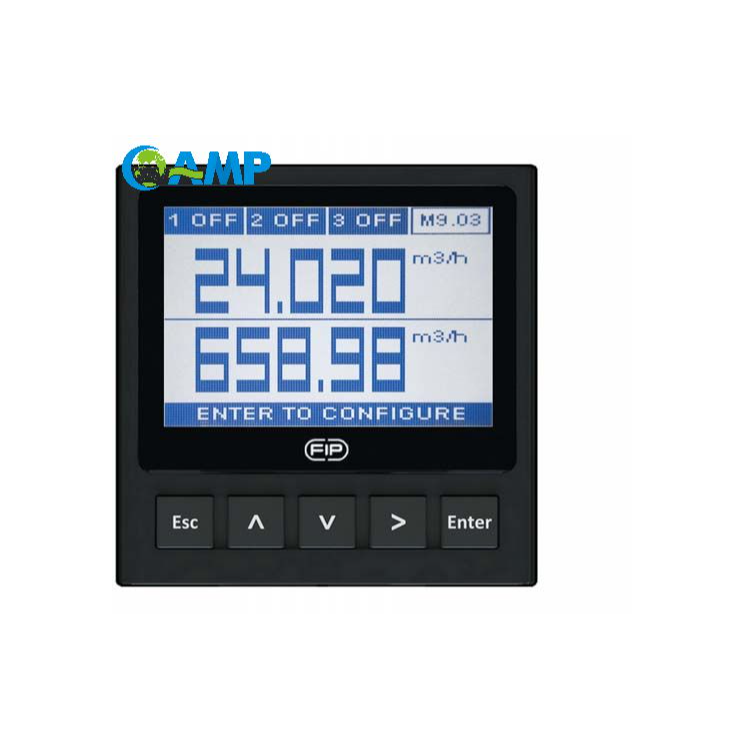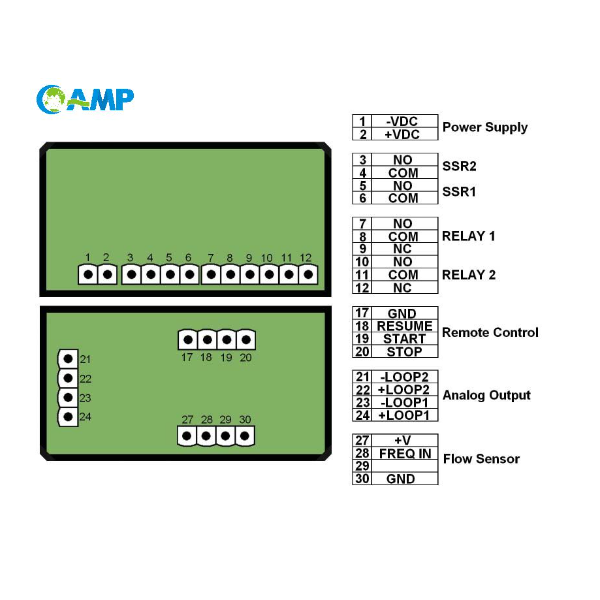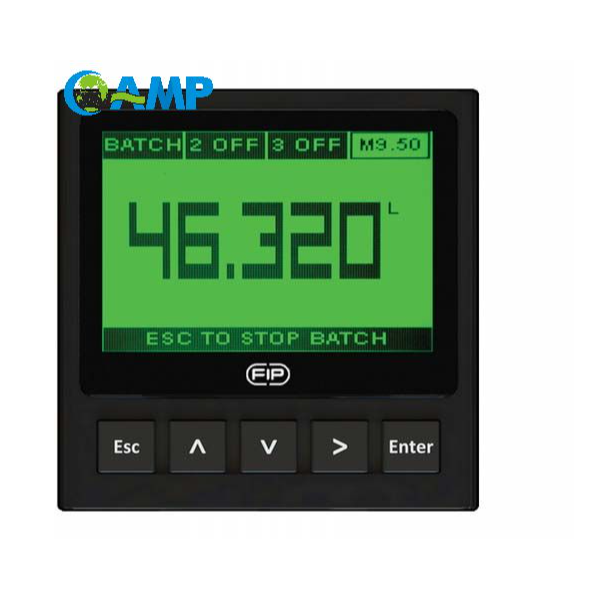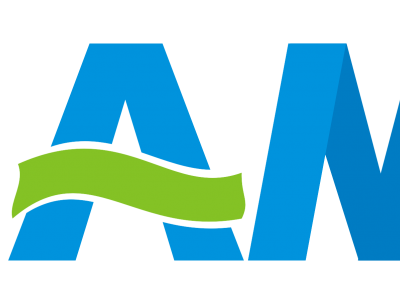-
 Chen Si
Hi there! Welcome to my shop. Let me know if you have any questions.
Chen Si
Hi there! Welcome to my shop. Let me know if you have any questions.
Your message has exceeded the limit.

What is a Conductive Sensor? A Comprehensive Guide to How Conductivity Sensors Work
2025-10-25 09:32:09
Given the nature of the topic, conductive sensors are an important method for measuring ionic content in solutions across various industries. Without such instruments, these systems cannot be carried-on where water treatment plants determine the quality of water, chemical industries optimize some process, etc. But what exactly is it that makes conductivity sensors tick, and why is their importance so paramount? This article explains the basic concepts about conductive sensors, their purposed applications, and actual modes of operation: a kind of operating knowledge for an engineer or an amateur endeavoring to understand conductivity sensors and their significance to modern-day industries.
Understanding Conductive Sensors
Conductivity Sensors measure how well a liquid conducts an electric current. They are important in controlling and monitoring the process related to various industries such as water treatment, food and beverage production, and chemical manufacturing. Conductivity analysis gives information about the purity, concentration, or contamination of the liquid. Their significance arises in maintaining quality and product standards, operational efficiency, or regulatory standards.
Definition and Purpose of a Conductivity Sensor
Conductivity sensors measure a liquid's ability to conduct an electric current. The principle governing conductivity is the presence of ions in the liquid, positively and negatively charged particles that enable current flow. Conductivity sensors consist usually of two electrodes immersed in the liquid, and upon applying a voltage between them, current flows through the liquid. The sensor then measures the current and calculates conductivity based on its dimensions and the distance between the electrodes.
Applications and Practical Insights
1. Water Quality Monitoring: Conductivity meters help in the measurement of water purities. You can have ultrapure water in pharmaceuticals or semiconductor manufacturing with a conductivity as low as 0.055 µS/cm, meaning practically no ionic content and high purity. On the other hand, seawater has conductivity levels way above 50,000 µS/cm, high due to salt concentration.
2. Industrial Processes: Food and beverage industries use conductivity sensors to ensure safety and quality of their products. For instance, sensors can detect contamination, such as excess sodium in brine used in food processing. In chemical processing, these sensors help measure reactant concentrations or potential impurities.
3. Environmental Monitoring: Conductivity serves in evaluating the condition of natural water courses. Conductivity readings higher than the normal in a river or lake would point towards the presence of contaminants injected through industrial discharge or agricultural runoff.
Latest Developments and Data
The beach of innovations in sensor technology gave rise to digital conductivity sensors that promise greater accuracy, reliability, and real-time data integration. According to recent studies, this development has enabled remote monitoring and IoT system integration. Smart sensors, for example, now offer automatic calibration and diagnostics, thereby minimizing system downtime across industries.
Data trends show a growing adoption of conductivity sensors worldwide, with a compound annual growth rate (CAGR) of 5.2% projected by 2030. Growth factors include stringent environmental regulations and increased demand for process optimization in critical sectors.
Combined with advances in software and hardware, conductivity sensors have become indispensable tools across industries, delivering unmatched precision and control.
Importance of Electrical Conductivity
Electrical conductivity is the ability of a material or solution to conduct electrical current. It's especially crucial in many industries such as water treatment, chemical production, and agriculture, where exact measurements are needed for ensuring quality and efficiencies. Current market statistics reveal that in 2022 the worldwide market for conductivity sensors was valued at approximately USD 2.05 billion, and by 2030 it may reach USD 3.05 billion, evolving at a CAGR of 5.2%. This growth is indicative of how increasingly vital conductivity measurement has become for regulatory compliances and operational workflows.
In water treatment plants, conductivity sensors measure salinity and ensure that drinking water meets safety standards. In the pharma sector, these sensors must have a role in ensuring water purity to ensure compliance with GMPs. Hence, enhancements in sensor technology that improve sensitivity and allow true integration of real-time-process data with IoT platforms are other aspects that have come up to automate the processes while cutting down on their cost and increasing their reliability.
Increasing environmental concerns also push these up through the demand curve, as such sensors aid in using resources optimally, hence cutting down on waste and environmental footprint. Cutting-edge technologies such as AI and machine learning, integrated later, would accordingly make conductivity sensors a bigger player in innovative development across several industry sectors.

Applications of Conductivity Sensors
Conductivity sensors find application in a wide plethora of instances, including the analysis of water quality, chemical synthesis, food, and beverage production, and pharmaceutical processes. Their ability to deliver precise, real-time data makes these devices essential for maximizing productivity, achieving compliance, and ensuring sustainability in their respective fields.
Water Quality Monitoring
Conductivity sensors play an important role in water quality determination, by measuring the ability of water to conduct electrical current directly proportional to the amount of dissolved salts and other inorganic chemical materials. According to recent studies, freshwater typically has conductivity values ranging from 50 to 500 µS/cm, while seawater has much higher values, often in excess of 50,000 µS/cm. Such measurements form an important part of processes like drinking water treatment, wastewater management, and environmental conservation to ensure water safety and compliance with established standards.
Therefore, for some advanced conductivity sensors integrated with Internet of Things and Artificial Intelligence technologies, the data now pass through real-time transmission and analysis. It is noted that industries using such systems improved their operational efficiency by 30% due to less manual testing and earlier anomaly detections. Wastewater plants, for example, employ such sensors to monitor contaminant levels, thereby reducing environmental risks and treatment costs. With sustainability setting the global agenda, the use of such innovative monitoring technologies will continue to grow.
Industrial Processes
The integration of real-time monitoring technology with AI and ML can alter an industrial process. According to recent reports, industries using these smart systems witness a reduction of about 40% in downtime, by methods of predictive maintenance. AI algorithms analyze sensor data to identify potential patterns and equipment failure likelihoods, and to suggest appropriate maintenance actions to avoid operational interruptions.
As an example, the global predictive maintenance market was valued at around $6.9 billion in 2021 and is projected to register a CAGR of 31% from 2022 to 2030, owing largely to its diverse applications across energy, manufacturing, and logistics sectors. Further, smart IoT sensors offer enhanced accuracy in detecting environmental changes, such as in temperature, humidity, and pressure, that raise quality control and regulatory standard compliance.
One important example is the chemical industry, where a fairly straightforward process of emissions discharge into the atmosphere is allowed to be reduced through real-time monitoring systems with AI in the loop for higher precision in chemical processes. Before, companies reported a 25% reduction in waste generated from the implementation of AI-led monitoring solutions. Such applications have also improved process efficiency, aligned with the global sustainability agenda, and have contributed to a greener tomorrow.
Pharmaceuticals and Environmental Studies
AI technologies greatly help in data analysis and predictive modeling in the field of pharmacology as well as environmental studies. AI-powered tools can identify candidate compounds in drug research and development faster than typical methods. In drug development, it is currently estimated that the research and development timeline can be shortened by 50% through AI integration, saving time and resources. AI could also analyze genetic, biological, and chemical data to develop drugs for personalized treatment, enabling precision medicine tailored to a patient's immediate needs.
On similar lines, AI also helps study ecosystems and analyzing the patterns of climate change in environmental studies. Scientists now track deforestation rates and detect pollution sources with greater accuracy than ever before, using satellite imagery and machine learning algorithms. A 2023 report considered different applications of AI to environmental protection, indicating that they have helped reduce prediction error margins by 35% in climate models compared to conventional approaches. These developments point to the emergence of stronger, more sustainable avenues for addressing environmental challenges.
Benefits of Using Conductive Sensors
Conductivity sensors can provide real-time, accurate measurements, enabling me to secure efficiency, regulatory compliance, and sustainability across a range of applications.
Real-time and Accurate Measurements
Conductivity sensors measure the electrical conductance of a solution, providing accurate data required for numerous industrial and environmental applications. Recent data indicate that the global market for conductivity sensors is forecast to grow at a CAGR of 7.2% from 2023 to 2030, driven by increased penetration across sectors such as water treatment, pharmaceuticals, and food processing. For instance, in water treatment plants, these sensors are used to monitor salinity levels to ensure compliance with environmental regulations and improve water quality. Real-time feedback helps industries respond rapidly to changing conditions, reducing downtime and improving operational efficiency.
Integration into an Automated System
Recent technological advances have spurred the integration of salinity sensors into automated systems. Latest reports and market insights indicate that the global salinity sensor market is projected to exceed $1.8 billion by 2030, driven by increasing demand in agriculture, climate monitoring, and industrial processing. The sensors continue to offer cutting-edge features such as wireless connectivity and IoT integration, enabling industries to access their data in real time remotely.
To illustrate, in precision agriculture, salinity sensors provide critical data on soil quality, enabling farmers to optimize irrigation practices for improved crop yields. Some studies found that water use can be reduced by almost 20 percent through the use of these sensors, supporting the premise of sustainable agriculture. Similarly, the use of salinity monitoring in the farming of aquatic organisms has become the basis for operating aquatic ecosystems for survival purposes and for production efficiency.
Artificial intelligence-based analytics are implemented with these sensors so that, once they are capable of detectingTrend and anomalysto act accordingly. In a recent case, integrated salinity sensors augmented with artificial intelligence improved the operational efficiency of water desalination plants by 15% and drastically decreased maintenance costs. Such developments highlight the instrumental role salinity sensors continue to play as catalysts for innovation and sustainability across industries.
Ultra Versatility in Various Industries
>Salinity sensors are highly versatile and almost invariably enhance operation and are thus enabled for sustainability. In agriculture, they are used to monitor levels of soil salinity for crops and ensure ideal conditions for their growth. Recent data indicate that farmers using sophisticated salinity monitoring systems have achieved a 20% reduction in water use through more efficient irrigation. Likewise in aquaculture, the sensors are used to control the water quality, which steers the health and growth rates of the aquatic species.
In the domain of municipal water treatment, salinity sensors are employed with a view of proper desalination and purification procedures. According to Google reports, the global market for water quality sensors, including salinity sensors, is projected to grow at a CAGR of 7.5% through 2028, driven by increasing demand for clean-water solutions. Somewhere, IoT-enabled salinity sensors have, in fact, enabled remote monitoring and real-time data analysis, slashing operational costs and boosting response time during potential system failures. These advances demonstrate the salinity sensors' invaluable contribution to the optimization of processes and the sustainable development of myriad other sectors.

Key Features of Conductive Sensors
From my standpoint, the main features of conductive sensors are high precision and reliability in measurements, which are essential for accuracy; compatibility with automated systems; and adaptability to a variety of industrial applications. These features ensure the accuracy and efficiency of my work.
Measurement Range and Accuracy
Conductive sensors are mostly considered to cover a wide range of measurements from about 1 µS/cm to more than 200 mS/cm, depending on what it is needed for. This ensures the testing of both the environment with low conductivity and one with high conductivity, such as ultra-pure water for pharmaceutical use or saline solution for desalination. Being recent developments in sensor technology and occurrences backed by current research, these sensors are said to deliver ±1% accuracy of the value being measured, meaning they can be used in even the most demanding conditions. Besides, their response time is short, enabling real-time monitoring, which is essential for process optimization and quality control across various industries.
Compatibility With Solutions and Systems
Conductivity sensors have witnessed tremendous advances, making them compatible with practically any industrial system and solution. Modern conductivity sensors run well with Internet-of-Things (IoT) platforms so that there can be enhanced connectivity and data analysis. Being so integrated, it also offers wireless monitoring and cloud data management, allowing operators in remote locations to access the system's performance metrics.
According to data recently extracted from online sources, the global market for conductivity sensors is expected to grow at a CAGR of 7.2% between 2023 and 2030. Technical advancements and improved applications in water quality monitoring would drive this growth-fueled demand from manufacturing, pharmaceutical, and food industries. The fact that the sensor can be placed in environments operating at extremely high temperatures or in corrosive environments further cements its position in various applications.
Furthering this, self-diagnostic features have been refined to reduce maintenance costs and limit downtime. In one case, sensors with auto-cleaning and predictive analytics minimize manual intervention and guarantee uninterrupted operation. These advances signal a shift toward selecting conductivity sensors compatible with modern technology and future-ready infrastructure.
Calibration and Maintenance Ease
Modern conductivity sensors are yet another example of an evolving culture that makes calibration and maintenance simpler and more efficient. A good percentage of contemporary sensors use automatic calibration and digital interfaces to lessen human error. Regarding recent industry trends, more manufacturers are adopting the plug-and-play approach for quick installation and integration with existing systems.
Moreover, studies reveal that sensors with wireless technology make remote monitoring and troubleshooting possible and, hence, maintenance can be brought down by as much as 40%. The main highlights of 2023 show that industries that employ sensors with NFC or Bluetooth see improved efficiency in their calibration processes, as these connections do not require any physical connection. In this manner, calibration can be sighted by operators without lengthy downtime.
Another big leap for calibration is the presence of pre-calibrated sensors. The devices are checked and calibrated for accuracy in a controlled environment before being shipped, ensuring accurate results the moment they are installed. Industry experts believe that this helps operational consistency and diminish cost involvement in regular recalibration attempts.
These new technologies, on the other hand, endowed modern conductivity sensors with a certain charm of ease and efficiency-a charm much sought by advanced operational setups.
Tips for Using and Maintaining Conductive Sensors
Conductive sensors require maintenance and are cumbersome to use; hence, they should be calibrated regularly and cleaned to maintain accurate measurements. Following instructions for setting up and using them should be mandatory. Extra care is needed for checking signs of early wear or damage so as to avoid measurement problems.
Calibration Best Practices
It is a paramount calibration of conductive sensors for accurate and reliable measurements. Aligning the sensor's reading with a known standard optimizes performance and reduces inaccuracies concluded. At present, general calibrations are done yearly or semi-annually, depending on operating conditions and manufacturing recommendations. For example, with high conductivity or extreme temperature, the calibration would have to be more frequent than usual.
Calibration typically involves solutions with known conductivity values. Example values range between 84 µS/cm-50 mS/cm according to the application. Always clean the sensor electrodes before calibrating to avoid any deposits being on the electrode surface that may impair readings. Current conductive sensors accepted by the trade often offer automated calibration, enhancing efficiency and accuracy in industrial applications.
An industry report from 2023 found that accelerated calibration technologies reduced calibration time by as much as 40%, allowing companies to reduce downtime and enhance operational performance. Ensuring proper calibration of sensors and taking advantage of modern sensor technologies strengthens the reliability and life of the sensors in question.
Cleaning and Maintenance Tips
Sensor cleaning helps maintain sensor functionality and ensures accurate performance over time. The latest recommendations state that sensors should be cleaned periodically, using nonabrasive materials with appropriate cleaning solutions. For example, one can clean optical sensors with isopropyl alcohol and a microfiber cloth to avoid scratches and dirt accumulation.
Next comes the factor of the environment. Extreme temperature and humidity levels, as well as corrosive environments, do shorten or reduce sensor life to an intolerable level, indicated by Google Search data. Regular maintenance, including inspections of sensor condition and connector joints for mechanical damage or corrosion, will help tackle bigger problems early. Industry data indicates that up to a 30-percent increase in sensor life can be achieved by implementing timely maintenance routines, resulting in a significant drop in replacement costs and system downtime.
Observing this cleaning and maintenance scheme, operators keep their sensor systems in maximum efficiency for their applications, always running with uniformity and with precision.
Troubleshooting for Accurate Readings
For a given set of sensors to provide truly accurate readings, the most common discrepancies within their working environment must be promptly identified and neutralized. Some common issues are:
Calibration Drift
The drift phenomenon occurs when a sensor loses its calibration over time due to environmental conditions, usage, or wear and tear. Calibration drift, says one industry authority, accounts for about 25% of sensor inaccuracies. Regular sensor calibration with certified equipment would prevent this from becoming a source of long-term inaccuracy.
Environmental Interference
Conditions like high humidity, dust, and electromagnetic interferences that are extreme undergo sensors to give erratic outputs. From all their studies, they have learned that environmental factors cause 40% to 50% of sensor failures in industrial plants. Using casings to protect them from environment will ensure the sensors will be kept safely from any external influences; in conclusion, the proper installation method designed for sensors should be considered from the very beginning.
Electrical Noise
Power supply fluctuations or air interferences can affect sensor performances, resulting in unreliable readings. From recent engineering analyses, electrical noise has been identified as a major source of error, especially for sensitive devices such as temperature and pressure sensors. One way to resolve this problem is to install proper grounding and provide EMC filters.
Aging Components
An aging component usually loses its sensitivity and its quick response over time. Research has also been carried out on the life expectancy of sensors, which indicates that they can last for a very long time; on average, they live 5 to 10 years, depending on their application and maintenance methods. Imminent replacement of old or worn-out parts and implementation of modern sensor technology will definitely help improve system reliability.
Software/Interface-Errors
If a wrong setting is applied in the software or an incorrect firmware version is loaded, the sensor will not function properly. According to recent research, 20% of sensor-related problems— 1 in 5—occur due to incorrect software settings. So, installing the latest firmware update and running diagnostic tool(s) to verify the system's compatibility could resolve such issues.
Proper troubleshooting and sensor technology utilization will, hopefully, solve these sensor-related issues ahead of time, give more life to the systems, and will allow for achieving maximum performance for critical applications.
Tags: What is a Conductive Sensor, Conductive Sensor


